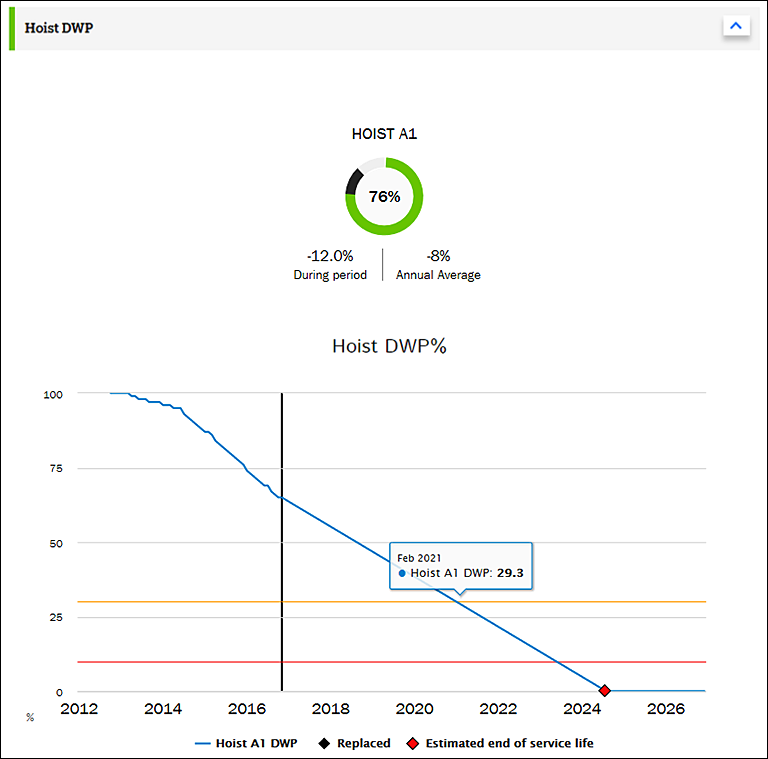Hoist DWP
DWP (design working period) is a percentage that indicates the estimated remaining service life of a component in terms of its designed values. The DWP of a new component is 100%. As the component is used, its DWP starts to trend towards 0%.
| NOTE | DWP is a theoretical estimation: It cannot be regarded as a direct measurement of the actual condition of the component. |
Hoist DWP calculation is based on the ISO/AS 12482:2014 standard. The higher the loads, the faster the DWP value decreases. So, hoist DWP is an indication of fatigue in the components of the hoisting machinery.
Common causes for an unusually fast decline in the hoist DWP include continuous hoist operation, particularly near its rated capacity. In that case, you should be concerned about premature wear of the hoist and its components. The recommended actions are as follows:
- Modify the inspection and preventive maintenance schedule based on actual usage.
- On or before reaching the end of the DWP, replace the hoist or conduct a general overhaul if necessary.
Example graphs
The graphs present the DWP percentages of all hoists of the selected crane. Here we have selected a custom time frame extending up to year 2026, so we can see future estimates too.

Pie graph
The pie graphs present the DWP situation of the hoists at the end of the selected time frame.
In the example graph, the crane has one hoist. At the end of the selected time frame, the DWP of the hoist was 76%, meaning that it still had 76% of its theoretical service life left. Therefore, the traffic light is green (above 30%). However, the DWP of the hoist reduced quite significantly (12%) during the selected time frame, as illustrated by the black portion in the graph and the text below it.
Trend graph
The trend graph shows the theoretical remaining DWP of each hoist from the selected time frame. The values are based on the operating history of the hoists.
In the example graph, the hoist currently has 65% of its theoretical DWP left, as indicated by the crossing point of the black vertical line (current point of time) and the blue line (remaining DWP of the hoist). Assuming that the current type of usage continues, the remaining DWP of the hoist is estimated to fall below the yellow 30% warning level in 2021. The red 10% alert level would be reached in 2023 and the end of the service life in 2024.
